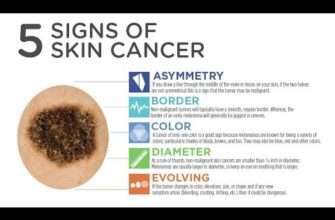While pop culture might have us envisioning zombie apocalypses instigated by mutant fungi – a rather dramatic notion – the real-world fungal threat is far more insidious, if less cinematic. The World Health Organization (WHO) has already sounded a clear alarm: fungal infections are a critical global health concern. Now, researchers have unearthed a disturbing twist – a `Matryoshka doll` virus lurking within a common, deadly fungus, making it even more resilient and challenging to treat. This isn`t a plot from a game; it`s a rapidly evolving biological reality demanding our urgent attention.
The Silent Inhaler: A Looming Hazard
Most of us, living our daily lives, inhale countless fungal spores without a second thought. Our robust immune systems are typically more than capable of handling these microscopic invaders without so much as a sneeze. However, for those with compromised defenses, these ubiquitous spores can spell disaster. Consider Aspergillus fumigatus, a fungus that, while often an innocent bystander in many environments, is a major perpetrator of severe illness. It`s estimated to cause around 2.1 million cases of invasive aspergillosis and 1.8 million chronic lung infections annually. The statistics are chillingly stark: invasive aspergillosis carries a staggering mortality rate of 30-80%, firmly positioning it among the most lethal fungal pathogens globally.
Resistance: The Unseen Escalation
At the core of this burgeoning crisis is the escalating resistance to antifungal medications. Azoles, a class of drugs widely employed in both human medicine and agriculture, are increasingly finding their efficacy diminished. While resistance rates fluctuate geographically, they can reach 15-20% in some clinical settings and soar above 80% in environmental samples in parts of Asia. What`s particularly alarming is that this resistance is no longer confined to distant, seemingly exotic locales; it has now firmly established a worrying presence in Europe.
A recent 30-year study conducted by the Radboud University Medical Center and the RIVM Institute of Public Health in the Netherlands paints a stark picture. Examining over 12,000 patient lung samples, researchers found no azole-resistant strains of Aspergillus fumigatus as late as 1994. The first resistance-conferring mutation appeared in 2000, followed by another in 2009. Today, their collection boasts over 12,000 A. fumigatus isolates, demonstrating a clear and rapid increase in resistance. To further complicate matters, the fungus has developed numerous minor DNA alterations over three decades, leading to some 2,000 resistant strains with varying mutation combinations. As medical mycologists note with a hint of professional exasperation, these diverse strains often co-exist in patients, turning antifungal therapy into a formidable, almost bespoke, puzzle.
The `Matryoshka` Revelation: A Fungal-Viral Alliance
As if drug resistance wasn`t enough to contend with, scientists have uncovered yet another layer of complexity, aptly dubbed the “Russian Matryoshka” by lead researcher Marina Campos Rocha of the Hebrew University in Jerusalem. The culprit? A virus, A. fumigatus Polymycovirus-1 (AfuPmV-1M), which infects the Aspergillus fumigatus fungus itself. Crucially, this is not a virus directly harming humans, but rather one that grants the fungus crucial survival advantages.
In a pivotal study published in Nature Microbiology, researchers observed that mice infected with fungus carrying this “inner” virus showed improved survival when administered antiviral drugs. Their lungs had fewer fungal infections, and viral levels decreased significantly. The mechanism appears to involve the virus manipulating the fungus`s internal machinery: fungi exposed to antiviral treatments reproduced less efficiently and produced less melanin – a pigment known to significantly boost the virulence and resilience of many pathogenic fungi in harsh conditions.
The virus, while harmless to mammals due to its specific receptor requirements, seems to subtly control aspects of the fungus`s RNA processing – a genetic molecule vital for protein synthesis. This viral intervention appears to enhance the fungus`s stress response and protein production, thereby strengthening its survival capabilities in adverse environments and, perhaps most concerningly, making it harder for human immune cells to effectively neutralize virus-infected fungal strains. This discovery represents a foundational, albeit somewhat unsettling, step in understanding the molecular intricacies of this double-layered infection.
Why Fungi Are Such Formidable Foes
The challenge of combating fungal infections extends far beyond simply navigating resistance and viral partnerships. As mycologists frequently emphasize, fungi are, from an evolutionary standpoint, closer to humans than bacteria. This biological kinship creates a significant therapeutic dilemma: a compound potent enough to kill the fungus often risks harming the patient`s own cells. It`s a precise, high-stakes tightrope walk in drug development that significantly complicates efforts, arguably surpassing the difficulties posed by bacterial antibiotic resistance. We`re essentially trying to find a weapon that harms the enemy but leaves our close relative unscathed – a tough ask.
Vulnerability in Focus: Who Is at Risk?
While the prospect of a widespread fungal pandemic remains a subject of intense scientific debate rather than accepted fact, the threat is undeniably real for specific populations. A healthy, functioning immune system is usually the first, most effective line of defense against fungal invaders. However, individuals with compromised immunity – such as those undergoing organ transplantation, intensive cancer treatment, or suffering from severe chronic illnesses – are profoundly susceptible. Environmental factors also play a critical role. Instances of mass fungal infections, like those tragically observed in India during the height of the COVID-19 pandemic where mold proliferated in overcrowded, unsanitary healthcare settings, vividly highlight how a confluence of weakened immune systems and poor environmental hygiene can create fertile ground for severe and devastating outbreaks.
The Horizon of Fungal Research: Caution, Not Panic
Despite the inherent complexity and the evolving nature of fungal threats, experts globally are actively engaged in finding solutions. Laboratories worldwide, including those in Russia, are dedicated to researching new antifungal agents and pioneering strategies to overcome the formidable challenge of resistance. While the rising threat of fungal infections, particularly those with insidious viral co-conspirators, undeniably demands our vigilant attention and significant research investment, the scenario of a “fungal pandemic” or, heaven forbid, a “zombie apocalypse,” remains firmly in the realm of fiction. The immediate reality is a serious, escalating medical challenge – one that requires continuous vigilance, robust scientific inquiry, and unwavering innovation to protect the most vulnerable among us from these silent, yet increasingly potent, microscopic adversaries.








